Planners See Taking Advantage of Technology As Winning Strategy

Technology, and the data it leaves in its wake, is making the job of media planner and strategist more important and more challenging.
The top planners from the biggest agencies say they are able to better identify customers, select new channels to reach them and measure the effectiveness of campaigns, thanks in part to emerging digital tools.
Staying afloat in the new wave of data won’t be easy, however. Planners say they must be vigilant that any new information is sound and that new platforms are legitimate. But far from fearing they will be replaced by machines, strategists say automation frees them and gives them more time to come up with creative ideas.
B&C business editor Jon Lafayette asked the industry’s top planners for their thoughts on some of the key issues impacting the TV advertising business. An edited version of their responses follows.
As multiplatform campaigns increase in popularity and social media becomes a growing part of the mix how is the role of TV in marketing changing?
JP Aguirre, UM: Brands that have woken up to the power of social are using their television ads as an invitation to converse and be a part of pop culture. The growing number of people who are multitasking on tablets and smartphones, own smart TVs or use technologies like Shazam are making it easier for brands to be at the center of those conversations. The trick for brands today is not how they can have a voice, but what they should say that is not perceived as self-interest. The best multiplatform campaigns I’ve seen think about audience utility first and then weave a brand’s product or service message in a non-intrusive way.
Chris Allen, Spark: Television continues to function as a reach-driver that is still unrivaled by any other channel, but we now consider all video platforms in our ‘TV’ planning. We’ve watched consumers get more comfortable with non-linear video options, and our media partner selection has reflected that. In some instances, we buy fluidity deals that allow impressions to be delivered across platforms by a single partner depending on how their viewers choose to watch content. We also incorporate digital-only media partners to supplement linear TV, especially among younger and light TV viewers. The goal is to create campaigns that connect with the right audience regardless of the mode of distribution, and while it is a challenge with so much fragmentation, we are getting better each time we activate a campaign.
The smarter way to stay on top of broadcasting and cable industry. Sign up below
Susan Eberhart, Optimedia: TV continues to provide mass reach and scale, but also serves up the source content that social media can then amplify, thereby driving deeper consumer engagements in real time. We know that over 50% of tweets come from live events. Take the World Cup for example; ratings have been very strong, but there were over 35 million tweets during the Brazil vs. Germany match. It set the record as the most tweeted sporting event of all time. For our Pizza Hut “Discover Great” program with Viacom, TV is the key driver, but it leads to a social hub that engages our millennial target to talk about and vote for their favorite “Discover Great” bands. This year we launched the first Twitter Amplify program at Hangout Fest and had fantastic engagement. We’re never going back to where TV did everything, but it will continue to play an important role, especially in creating custom content, and must-watch programs/events that drive social buzz.
Kristin Goodloe, MediaCom: The reports of TV’s death are greatly exaggerated. In fact, in some ways, technology has only made TV viewing more vibrant and potentially relevant. Consumers are now viewing TV while engaging with multiple devices, enabling them to search for products and interact in real time with other consumers, influencers or even the brands they’re seeing on their TV screens. Viewers can provide immediate commentary and feedback, read product reviews and even purchase in the moment; technology is actually making TV viewing far more social and instantaneous, pulling the viewing experience further down the purchase funnel. In many cases, this has shortened the purchase journey to a matter of minutes or even seconds.
Stephanie Hill, Initiative: The consumer role of TV isn’t actually changing. People still want to watch fun, interesting content. What’s changing is the distribution model and consumer control, which is obviously increasing steadily. Both factors necessitate smarter, more engaging advertising and branded content.
Ed Kernan, OMD: With each year, more and more platforms are becoming available and we have always welcomed it from the beginning, starting with mobile. Five years ago, we won two Silver Cannes for the mobile campaign we did for Gossip Girl and mobile was relatively a new medium that not all advertisers were embracing. Luckily, we have a client –The CW—that is very open to be the first to use a certain platform that we believe in, knowing that their viewers are also early adopters. Recognizing that TV viewers are multitasking and being active on their social platforms while viewing, TV and social together lends itself to more opportunities to amplify the advertising message we are delivering to them over terrestrial.
Karla Knecht, Starcom USA: The role of TV has not changed drastically. The ability to reach a mass number of people with sight, sound and motion is the benefit of TV. What has changed is the ability for programming to be enhanced and amplified beyond traditional exposure. Social has taken water-cooler, word-of-mouth on your favorite TV Shows to a new level. Imagine Friends or Seinfeld in the ‘90s having the benefit of Twitter, and the amount of earned exposure that would have been gained from conversations across social channels not being limited to Friday mornings in the office. Additionally, social has expanded the footprint of video beyond traditional primetime programs and given other vendors, like cable networks and digital partners, the ability to gain buzz around their programs.
Briony McCarthy, PHD: They are interlinked: Social media is contributing to live viewing of TV, and in turn, TV is fueling social content. Social impact on live ratings is especially true for audiences who have a fear of missing out and must watch now to avoid social spoilers from friends. Social feeds have in essence become the new TV guide; a personal endorsement and a recommendation for our viewing pleasure. Social listening is now one of the filters by which we use to evaluate not just the role of TV but the possibility for brands to play a deeper role in the viewing experience.
Christine Pineiro, Carat: The role of social media is becoming more multifaceted in that it can amplify TV efforts throughout the bought, owned and earned ecosystem. In addition, social media is starting to inform TV planning decisions with the insights gained through social conversations, number of followers, likes, tweets, etc. This data is just starting to be mined and will have a big impact on how advertisers plan TV moving forward.
Alison Pohorylo, Maxus: As a TV marketer, social is crucial to my brands’ success. And for us, whether we’re launching a show in its fourth season or one that’s brand new, video content sampling—across all platforms—allows us to drive awareness, interest and tune-in. We’re looking to build our social fanbase before there’s even a ‘product’ available to consumers, and continue to consistently build those communities, and leverage our owned social channels for sampling, and to spark engagement and excitement. So, we are the content creators and distributors, which really sets this category apart. In terms of TV implications, we want to connect touch points and facilitate conversations. Therefore, we’ll use our television creative to drive to social, promoting hashtags that link social chatter. It’s less about a shift for us, than making the pieces work together.
Sheri Roder, Horizon Media: The role of TV remains primarily about driving consumer awareness. However, with technology it has also become integral in driving conversations in the social space. There is a lot of multitasking while viewing which may take some attention away from the platform, but it also makes the experience more shareable and social. Because of this growing co-dependency, social media can be a powerful way to extend the impact of a campaign that begins via TV. It can also work from the other end—whetting people’s appetite for what’s to come via TV—so ensuring you get the highest awareness possible. Many multiplatform campaigns have TV content as a center due to its large scale, and the other platforms expand and personalize on that content or subject based on consumer interests. Really understanding who you’re going after and the way they relate to and consume messaging via TV and/or other mediums means we can adjust the mix by consumer segment or typology to maximize the impact of each of the platforms we’re employing—it’s a ‘sum of the parts’ exercise that’s as individually tailored as possible given the efficiencies we need to achieve. In sum, while TV viewing is more fragmented than before, it is also more of a catalyst than ever before to create opportunities for enhanced consumer engagement.
What will it take to make you comfortable shifting a large share of your clients’ dollars from traditional television to digital video?
Aguirre: At UM San Francisco, we’re already pretty far along that path. We recently coined the term “media omnivores”—those who sample their desired content across multiple devices on their own terms. Digital video is at the center of this on-demand world and the best part, we can get more targeted in the eyeballs we’re reaching, encourage deeper engagements and track those desired behaviors. It’s really a no-brainer to have a channel-neutral video strategy.
Allen: I think the allocation of budget resources should closely follow the viewing behavior of consumers, so it has been a gradual shift over time. If a brand has to make a dramatic shift in one planning cycle, then they are already behind.
Eberthart: We have already started the shift, based on an increased usage of online video. With our “Live ROI” approach, our allocation of media spend by channel is primarily based on the most effective ways to connect with consumers. As consumers’ behaviors change, we need to ensure that we are reaching them in their relevant environments. Identifying the KPIs [Key Performance Indicators] at the beginning of the campaign also ensures we are tracking real-time performance and optimizing the channel. As performance benchmarks and delivery metrics improve, the comfort in continued budget shifts will grow.
Goodloe: It’s already happening, and the consumer is leading us there. We can no longer have a singular, linear video/visual strategy if we hope to connect with consumers whenever and wherever they’re engaging with their favorite content. In order to create the greatest effective reach for our clients’ messages, it’s critical to have a screen/device-agnostic approach. Digital video also allows us to surgically target the most lucrative consumers based on their past digital behavior, which provides an effective complement to the more mass reach of TV.
Hill: We are already very comfortable with large allocations for digital video. Being screen agnostic is essential to reaching today’s consumers.
Kernan: For the clients I oversee, we get one media budget that is not broken out by media type. Clients depend on us to make the most sound allocation recommendation for each media type. While we are not necessarily shifting dollars out of TV to digital video, we do ensure that we have effective levels of digital video out there, but not at the cost of TV.
Knecht: Data and understanding response are essential to shifting the mix of traditional video within TV to online video. As historical models are refined from channel—TV, Print, Display, Mobile—to understand the impact of viewing video across screens, I would expect the way we plan to evolve to creating experiences around content. Video will continue to be an important way of communicating, however, the way in which we buy video will be more fluid across screens to mirror the way consumers want to interact with it.
McCarthy: Today, we manage curiosity with caution and wrap whatever video we do in a measurement plan that allows us to learn something, whether it be what type of content increases the likelihood of purchase intent or at what second into the video is the optimal point to place a client logo. Incremental video budgets are an output of incremental learnings but to validate a shift greater than 10%-15%, I’d need to see a proven impact on a client’s business either by way of ROI or an increase in brand measures, a continued stream of original content becoming available online first or the Amazons, Apples or Googles start bidding and winning on live broadcast events. That will be the big game changer.
Pineiro: We need measurement to catch up to consumer adoption of non-linear video viewing. It can be difficult to justify significant increases in video outside of traditional TV because the measurement is either not the same or limited. While research companies are making inroads, we need metrics and tools that allow us to look at ratings, viewership, audience composition, across screens so that we can properly compare them and make more informed investment decisions.
Pohorylo: We take a true idea-led approach to planning and channel mix. On our team, the best idea wins—especially when working with tight budgets. Digital video helps us to promote sampling efficiently across desktop, mobile and tablet. Because our message is always time-sensitive, and because our funds are precious, [Maxus parent company] GroupM works with a tight set of preferred partners to ensure viewability and premium inventory. But we’re always mindful of the fact that timely and linear tune-in is our clients’ primary revenue source. As a promotional tool, we do consider TV to be, to us, what shelf-talkers are to [consumer packaged goods] brands. It’s our point-of-purchase environment, and we always consider it as a complement to heavy-up exposure and broaden reach leading into a premiere.
Roder: While we understand that digital video is an important piece of the overall video buy, many things would have to happen for us to be comfortable shifting a “large” share of our clients’ dollars to digital video. First, TV viewership would have to decline, which currently is not the case (yes, ratings are down in prime and some top tier networks, but up in other areas; overall viewership is stable). While YouTube, AOL, and Yahoo are creating or curating some premium content, more would have to be produced with proven viewership for us to consider a large shift. Bringing digital video CPMs more in line with TV CPMs is also something that the digital video publishers need to work towards to maintain a client’s overall GRP levels. We would also say that digital video is not recommended for all clients. It takes a much longer period of time to reach unique viewers; TV provides more immediate impact. We would recommend those clients—tune-in, film, or retail clients, for example—looking to drive immediate action should stick with TV. Overall, we see digital video as an important complement to a TV buy and recommend supporting it at the right levels for the right clients.
What new data is available that’s useful in helping you to understand your clients’ consumers?
Aguirre: Most research out in the market relies on self-reported methodologies. We’ve always known the pitfalls of this—people try to rationalize beliefs and behaviors that they don’t fully understand. Even observational research like shop-alongs and focus groups often skew people’s answers and cloud the opportunity to mine real insights. Technology is changing this. We recently did some research for Charles Schwab that equipped investors with Looxcie cameras. The participants recorded their lives for three weeks and we parsed through the footage and then probed them on their behaviors. It was incredible to spot the disparities between what people claim to do to manage their investments and what they really do. The insights we generated from this research enabled us to identify key windows of receptivity in media to connect with prospects.
Allen: Testing new data partners and targeting approaches is now a regular component of every campaign. Our data and analytics team is fusing multiple data sets together at the start of the strategic planning process, which is helping us set budgets and determine the optimal media mix. Some of the TV operators have become pretty adept at leveraging third-party data anonymously matched against their subscriber data to deliver ads at the individual household level, and we’ve seen strong results from those campaigns. We recently leveraged an SMG partnership with Acxiom that allows us to marry first-party data with premium digital inventory to be even more precise in our digital targeting. We are also using an iterative process with many of our clients that allows us to measure which channels are working hardest against our marketing objectives, either directly or indirectly.
Eberhart: As part of our Live ROI planning approach, we are continually gathering new consumer and brand data to gain deeper up-to-the-moment insights. Media 1440 is one example of a proprietary research approach we use to connect consumers’ category usage and media usage at the point of decision. Additionally, we’re taking advantage of the consolidation of data sources—better target insights fueled by social activity and physical location data, as well as identifying TV preferences from our e-commerce traffic. All of this allows us to create plans that better align with consumer behaviors at a granular level.
Goodloe: The data we are able to capture from observing consumers’ digital and social behaviors has become more and more influential in learning how individuals engage with overall product categories, as well as individual brands. In the beauty category, for example, we are able to understand when women are talking about beauty most, what looks are most important to them and what product benefits would be most meaningful to their beauty regimens. These are true, “unmanipulated” conversations—we’re just a fly on the wall, in the best possible way! This type of insight can affect the entire marketing mix—media strategies, product development opportunities, creative/content development and even retail planning. When you can extract what’s really meaningful and tie it to client business data you can really begin to impact sales and move product, which—at the end of the day—is what we are all trying to do.
Hill: Initiative has a proprietary Connections Panel with over 25,000 consumer respondents. Panel data, which is increasingly available in real time, allows us to look at consumer behavior and interaction with over 65 different media channels—many, many more than are measured with any of the syndicated panels. We are also able to understand media channel behavior across the full range of our clients’ categories, which has been invaluable in understanding consumers’ varied paths to purchase.
Kernan: Social data plays a great part in understanding the passion points of our client’s consumers. The CW has a huge active social following, which as we all know, doesn’t always translate over to Nielsen ratings as they consume TV content differently. Digital Analytics has been another great data resource to see which placements and sites are working/not working so we’re able to optimize during the campaign.
Knecht: It’s not one data source that’s new, it is the access to so many data sources to think about customers and prospects in rich, strategic ways that has been beneficial to understand consumer audiences. We live in a world that is data rich. The challenge is being able to comb through the amount of data that is available in order to identify meaningful information. We spend time merging client data with third party, and reported data to understand who they are, and the best way to connect with them.
McCarthy: There isn’t a silver bullet or a single data source we use to understand our client consumers but DMP [data management platform] solutions have made it easier and quicker for us to digest, assess, test and continually refine our media program and audience targets. The constant stream of data is changing the media planning process and we are big on iterative audience modeling—the process of finding sparks that unearth new or emerging attributes to better reach our audience. We look to first party data to incorporate what we learn about those who visit or take action on-site or in-store, into our consumer profiles and as such, our targets are constantly moving. I’m excited also by what companies like Neustar are doing to help us understand different motivations and consumer need states across the different parts of the consumer travel journey, from planning to booking to the travel experience itself, even to the moment when you return home. Specialized data sources like this help us to develop very specific, narrow, nuanced and meaningful media solutions. As such, broad audience reach is becoming less of a priority.
Pineiro: It’s not so much about having new data as it is being able to access and use existing data to improve how we reach our key consumers, to reach them at the right time and also with the right message. We are now able to bring together what our clients know about their customers and what our media partners know about their audiences to create refined audience segments and better targeting.
Pohorylo: We’re always in search of new ways to define and dimensionalize our target audiences, which vary from campaign to campaign under the broader network umbrella. We plan TV on a hyper-granular level based on viewership duplication, which is exciting, but not quite new. Right now, we’re excited about opportunities for post-campaign data available through programs employed across Smart TVs. We can track campaign delivery across the footprint—local and national linear buys and even online video—and then report back on which of those exposed viewers took action, and tuned in. Though we can’t optimize buys based on those results, we can make some great assumptions about who we reached, how we reached them and who responded. As televisions become more and more connected digitally, it’s opening up a wealth of learning opportunities for us.
Roder: What isn’t available these days? I don’t think the question here is necessarily about new data; the challenge is how to connect the dots between the tons of data clients have at their disposal and often don’t know quite what to do with. How do we make sense of all the data at hand to understand triggers and behaviors over time? How do we look for the windows of clear opportunity where people are—ideally—primed for some sort of action, in relevant moments of contact? Or, what can we learn about how to prime them to take action of some sort? The one area that is lagging slightly is the murky area of emotion—it is very hard to correctly quantify and collect this type of ‘data.’ That is, if you will, the art side of what we do, and it’s a huge factor in getting to the root of why people behave the way they do, which is my team’s stock-in-trade. Segmenting differently and also taking advantage of some of the new technology available are two keys to making the unpredictable more predictable, because that’s really the goal—to get ahead of it all.
Technology has had a big impact on media over the past decade. How will technology change what you do and how you do it over the next one to three years?
Aguirre: I lead UM’s startup accelerator, Mad Valley, where I’m tasked with connecting our clients with bleeding edge technologies. Rubbing shoulders with the best and brightest entrepreneurs gives us tremendous insight into where the market is headed. And, we can take that insider knowledge to our clients to make informed bets on new technologies and even create bespoke solutions that don’t exist out in the market today. The end result is that technology is making the impossible possible. As a strategist, this makes my job more complex, but far more exciting. I’m stoked to come into work every day because I know that any crazy idea we cook up can be created simply by bringing the right people in Silicon Valley together.
Allen: Addressable television has been a passion of mine for a number of years, and I’m excited to see more advertisers taking advantage of the technology. The ability to holistically measure campaigns across channels is finally getting closer to becoming a reality, so I look forward to the day that I can plan for optimal cross-platform reach and frequency levels against individuals rather than on average for an entire target segment. I’m also excited about some of the testing happening in social media that will provide new insights to inform the video we purchase
Eberhart: I think technology will continue to allow us to get smarter about our consumers, as well as to understand and predict their behaviors for more synergistic targeting opportunities. From a strategic perspective, this will enable us to truly deliver the right message, in the right environment, at the right time. For example, ‘beacon technology’ is moving us closer to intercepting a consumer at the “point of need” and delivering an immediate custom message or offer. In addition, with the increasing penetration of Smart TVs, the improved possibilities around interactive ads and data will allow for more targeted placements to increase ROI.
Goodloe: Technology always has an impact—sometimes for better, sometimes for worse. Technology and data will allow us to know more and more about consumer behaviors in the next few years and, as a result, how to find them most efficiently. This is particularly evident in the mobile space, as data capture and location-based technologies improve and proliferate. With that said, data, automation and efficiency are only part of the puzzle, and clients understand this well. To truly entice consumers, art and creativity must accompany the science. We will need to be vigilant about the analysis, curation and test and learn practices we wrap around technology advancements, as it will never be just be about CPMs but also about consumer engagement and business results.
Hill: Technology is a beautiful thing and is allowing consumers to experience the world in ways we never would have imagined even ten years ago. For marketers, one of the big challenges of technology is the staggering amount of data it creates. The more technologically advanced we get, the more data available to measure every aspect the campaign. What has changed and is continuing to change is how sophisticated we become in using that data—triangulating various data for better insights, figuring out how to use behavior hard data vs. mindset and motivation soft data and most importantly, encapsulating data takeaways into meaningful and actionable information that our colleagues and clients can understand.
Kernan: There is a lot of buzz around Occulus Rift, GoPro, Wearable tech, Smart TVs and the latest apps. Our challenge is how we can integrate these new technologies into opportunities for our clients. These days, we are not just meeting with traditional and non-traditional media vendors, we are also engaging with the Samsungs and the Wazes of the industry, as an example.
Knecht: Technology is enabling us to be smarter and faster and it has opened the door to creativity. We are smarter because technology provides access to more data, studies, research, customer information and competitive information, which allows us to make better informed decisions and/or hypotheses. Technology also allows us to move faster. We can get to market more quickly, be more agile and make changes along the way to ensure optimal response. Over the next few years this will continue to be amplified. We will have more connectivity between data sources and this level of connectivity will provide the opportunity for precision targeting across more connection points and new ways of connecting with consumers more creatively.
McCarthy: DMP’s are a great example of how technology is changing media by giving planners back time and permission to make quick decisions. I see the function of media planning becoming more of a real-time response with planners in a constant state of decision-making. We will be making more calculated risks because data will be driving our decisions. Innovation will no longer be defined by a percent of a media budget sidelined for testing and instead entire media budgets will be a series of dynamic tests with everyday enhancements and optimizations. As this happens, it will be crucial that media and creative be in lock step once again as content and commerce become one and the same.
Pineiro: Technology will make our processes more automated and efficient, which will not only streamline workflow but also allow planners to focus more of their time on strategy vs. operational needs. On the flip side, media planning will likely require a slightly different skill set, one heavier on analytics and lighter on communication skills. This will not only change how we recruit, but also how organizations define media planning.
Pohorylo: Technology is not only aiding us in finding new ways to reach audiences and refine those audiences based on new data sources, but it also makes our product available across a fragmented set of sources and decreases the urgency for viewing. Luckily, our clients are evolving too. NBCU is making investments in their TV Everywhere product to ensure that they’re delivering content in the way in which their audiences want to consume it. As we learn more about who is watching, and how, we’ll be able to define those audience segments, and tailor our messaging and media mix to them. It’s a truly exciting time for television, but a challenging one as well. We’re living in a world in which HBO welcomes sharing passwords to their online viewing destination. We’re living in a world in which Twitter is working with cable systems to introduce channel-changing functionality into their feed. Though the majority of video consumption is still live TV, nearly 50% of households are streaming video and those devices are stealing some share. And that’s just today. The coming years will see an increase in fragmentation and a huge need for television marketers to remain nimble in order to remain competitive.
Roder: Technology has and will continue to change our business. Google Glass is a great example of a nascent technology that will become everyday; it’s an entirely new type of medium to consider as it combines what we now think of as video, digital, audio and wearables into one delivery mechanism. And just imagine the data that will generate. Advances in technology are already helping to provide more accurate ROI information—John Wanamaker’s famous quote about not understanding which half of the advertising is working is no longer true due to technological and data advances. And we know whom it is working among, as well. One of the biggest advances that will impact what I do is the quantified self-movement—talk about understanding what makes people tick! Looking ahead I can see the direct connection of the quantified self-movement to what media we consume, to what we buy, thus completing the loop—and it will all be immediate and seamless and invisible. For instance, when I’m watching some sort of communication from an advertiser, in that moment we can tell if my heart rate goes up or I start to salivate—whatever we know those unconscious physical triggers are—and we also can track what my next action is: Do I order that pizza? Do I do an Amazon one-click? Do I immediately download a movie or check out a movie’s ratings on Rotten Tomatoes? Or maybe that item is now in my grocery cart tomorrow. Leveraging unconscious sensory reactions of all type and responding similarly is another area I can see gaining ground. There’s already an app for your iPhone which will release a bacon smell as your morning alarm—imagine that on a greater scale. This is where I think we can get a more accurate read on how people feel and the physical reaction that engenders. That’s a great playing field for us.
What is your role in programmatic buying? How do you help define audience segments that would be important for your clients to reach?
Aguirre: I’m a data geek, so data driven planning is a personal passion. Programmatic buying is not only more efficient, but it allows us to be more targeted, to customize messaging and to be smarter in the way we reach audiences. I am not personally involved in programmatic buying, but the insights that team generates from campaign response rates and online behaviors is tremendously valuable in the refinement of the strategies and target profiles I create upfront. Because we get that data in real time, we’re able to course correct quickly and improve performance incrementally every day.
Allen: Programmatic buying is no longer a concept, it’s an effective tactic to help us deliver campaigns at scale. With the fragmentation of media choices, it’s imperative that we get comfortable leveraging data and technology now, so that we are prepared for the future. If we think we are overwhelmed with data today, just wait until sensors are embedded in practically everything in the next few years. We expect to be able to scrape data off millions of devices, which will make our jobs even harder, but will also make our campaigns more targeted and more relevant to consumers.
Eberhart: I work with all of our teams to identify development areas for clients. Programmatic buying is just one example of how we go to market. We are continually looking for new ways to improve effectiveness against our best target prospects, whether finding new insights or improving optimization. Although automation is a big part of the programmatic process, we continue to need experts—the human factor—to oversee and manage the outputs for the strongest strategic learnings. Defining our best target prospect/segments starts with identifying our key objectives and what behavior are we trying to change. Are we trying to gain new users, get increased loyalty from heaviest users or convince switchers to use us more? Understanding the usage and buying habits via first- and third-party data will help uncover those target nuances and will result in different media strategies, channel mixes and ultimately messaging. Integrating a test and learn process across all segments will bring new insights and ultimately identify profitability of each target group.
Goodloe: Our role in programmatic buying is to determine whether or not it is the best approach for a brand based on the client’s business objectives and brand KPIs. I think about programmatic buying as leveraging data to laser target consumers wherever they are, and providing a level of automation that yields better buying efficiency. No other tactic today can offer the same precision. While this sounds like a no-brainer, it may not be right for all clients, particularly luxury companies or those looking for deep consumer engagement. It should be a part of the mix, but it’s not the Holy Grail. To define the most productive audience segments, it starts with determining the business growth opportunity using a mix of client and syndicated data. This is then translated to an audience-buying target via our proprietary tools that pull thousands of data points from consumers’ online behaviors to build the strongest audience profile.
Hill: My role is to define target audiences based on both mindset and, as it relates specifically to programmatic, behavior. Because programmatic targeting allows us to target consumers based on their true behavior, we can create rules to enable automation. Initiative’s goal is to automate 50% by 2015, which will offer huge benefits to our clients in the form of minimizing low-value work that can be easily automated. This will clearly allow us to focus on the more high-value issues that we, on behalf of our clients, face today.
Kernan: I act primarily as strategist that crosses over all areas of media. We are doing programmatic buying, but it isn’t the main focus of the campaign as it serves more as a cost-effective way to hone in on your target in the environments you desire. We will give four or five qualifiers to define the audience segments, however, usually not more than that as we don’t want to limit our reach and be too narrow.
Knecht: My role as a strategic media partner is to link the mindset of customers to optimal media interactions to garner a response. In a programmatic world, my role does not change. Our priority is to identify many different audiences and refine them over time based on response. Programmatic allows for optimization towards the right segments that we know are responding to the brand’s message; in turn, we can take audience data and replicate that knowledge across other media channels.
McCarthy: Programmatic is fuel for planning and vice-versa. It used to be that we would start the planning process with pre-established audience consumer profiles, but now programmatic is integrated much earlier into our planning process. Now we start with who we know our audience is based on actualized sales or intention data. Lookalike modeling is nothing new but the speed in which we can find, bid, test and convert these audiences has evolved. Programmatic isn’t just about finding audiences, it’s also helping to unearth deeper brand associations and inform offline media decisions. One of our travel clients challenged us to increase home state bookings and through programmatic, we learned that those booking on the site were also Major League Baseball fans, so we reorganized the media plan to incorporate sponsorships of local MLB teams, and revenues increased almost immediately.
Pineiro: As my client’s team lead, I oversee our programmatic buying strategic approach and implementation, and work closely with our digital and programmatic teams on activation. In my role it is critical that I ensure we have the right staffing and training to support our Programmatic buys, and that we are continuously testing and learning in the space.
Pohorylo: We’re exploring and testing programmatic buying, beginning with addressable TV. It’s our job to balance driving audiences efficiently, and engage them with an idea across platforms. In terms of defining audiences, each planning cycle kicks off with a deep dive into audience definition, and with a returning show we have a wealth of data to help us reach best prospects. We evaluate season-over-season viewership trends, not only to work to stem losses, but also to identify untapped opportunities, and look closely at network/program duplication to ensure that we’re reaching the right person in the right place. Our more granular approach to TV marries content and context.
Roder: As context, Horizon’s programmatic buying offering combines technology and service for buying across the programmatic spectrum, from premium to open exchange. Targeting is crucial to programmatic’s success, and programmatic is also going to help make digital targeting even more precise. It’s the chicken and the egg. Ultimately, programmatic will enable us to plan around a person’s digital journey rather than the standard funnel—because we know exactly what that journey is each time. Looking at similar patterns across consumers’ journeys is a powerful way to pinpoint segments based on actual digital behavior. Furthermore, it’s a great way to explore if other audiences—in addition to the ones we’re going after—are responding to messaging and in what way, which may evolve our targeting. This is about plan, react, adapt and scale. At the end of the day, our goal is to make each impression count, and that means serving an ad or other communication to the most likely target, and getting smarter about it the very next time that ad is served. This means working hand-in-hand with our digital team to see the bigger people picture, and then inform the strategy so that the programmatic targeting can then do what it does best even better the next time, and the time after that —reaching each single person at the right point in their particular journey with the right/best message. The evolution of programmatic will require an umbilical connection between my team and the digital team, which will change the complexion of both groups over time.
JP AGUIRRE
Title: Senior VP, group partner, strategy, UM | Hometown: San Francisco | Age: 34
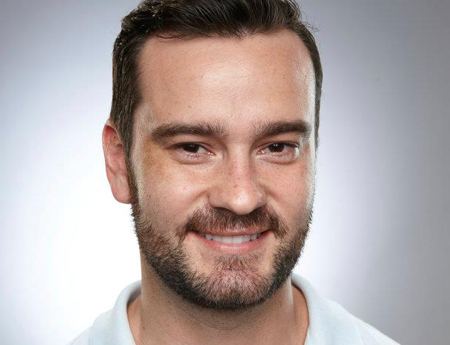
Education: University of San Francisco| Grad School: Columbia University
First Media Job: Assistant media planner at Arnold Ingalls Moranville in San Francisco. “We worked on a bunch of different startups,” he says, including Inktomi, one of the pre-Google search engines, and Eve.com, the first e-commerce site for beauty, which was bought by Sephora.
Planner vs. Buyer Mindset: “They’re different sides of the coin. Planners think of how media will unlock the business outcome that the client is looking for. The buyers are trained to bring that strategy to life and really pay off on that vision,” Aguirre says. “I see them working really tightly together and one complements the other. You can’t all be big thinkers. Some of them actually have to get the work done.”
Favorite TV Show: A toss-up between Game of Thrones and The Walking Dead.
Key Clients: Charles Schwab, Edmonds.com, Ghirardelli
Cool Campaign: “We’ve been trying to figure out ways to convince folks that are currently at a full-commission broker to consider making a shift to Schwab,” says Aguirre. “But it’s really hard to break these relationships because they tend to be long-standing ones. It’s kind of like a marriage.” Instead of focusing on Schwab’s lower fees and investment tools, the agency created a series of short “Why I Left” videos with filmmakers on Vimeo showing people who decided to make life changes. After three weeks, the videos had generated 200,000 views without paid support. “It’s resonating with folks and tapping into an inherent desire for people to take life by the horns and make these positive changes,” he says. The most popular videos might be used in traditional media, either as pre-rolls online, or as a substitute for other TV spots.
CHRIS ALLEN
Title: Senior VP, strategy director, Spark
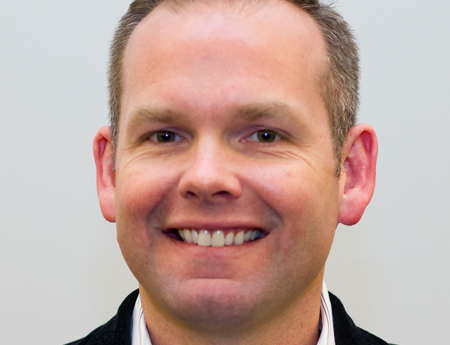
Hometown: Dallas | Age: 41
Education: University of Texas at Austin
First media job: Buying spot TV for Walmart at GSDM in Austin. Allen also did spot TV and local traffic for Lennox heating. “When they decided I wasn’t going to quit, I was promoted to budget coordinator on the MasterCard account,” he says. “It exposed me to a big national brand and it also gave me exposure to national television, working closely with the national broadcast team, which was based in Chicago.”
Planner vs. Buyer Mindset: “Strategists get to really see the big picture and get to look for business solutions,” he says. “Buyers’ focus is more on specialization in their individual area and helping to put all the pieces together that deliver on that strategic vision. One of the things that makes them both very much alike is the importance of building relationships both with clients and with others in the media community.”
Favorite TV Show: “I’m a cord-cutter so I get a lot of my content through streaming services. These days I’m watching Orange Is the New Black. I still buy entire seasons of Mad Men through my Apple TV.”
Key Clients: Fifth Third Bank, Avis, Orbitz
Cool Campaign: Fifth Third Bank has been running a campaign about how the company helps customers get back to work—and avoid foreclosures—through a partnership with a company called Next Job. “We didn’t have a television budget so we had to figure out ways to creatively drive as much reach in earned media through digital as we could,” Allen says. “As far as we know it’s the first campaign that’s been executed where driving shares of our content was the primary KPI and the campaign has been a huge success.”
SUSAN EBERHART
Title: Executive VP, managing director, Optimedia
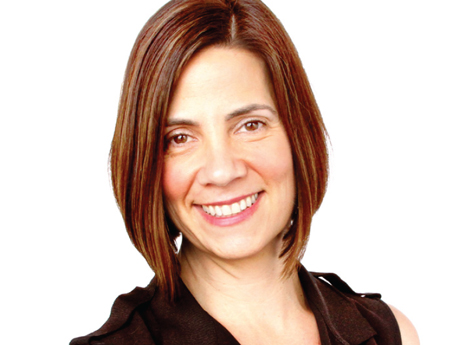
Hometown: Lafayette, La. | Age: 50
Education: SMU
First Media Job: Assistant media planner at the Bloom Agency in Dallas. “We did everything from creating all the daypart optimizations, all the target research and geographic analysis on BC headache powder,” Eberhart says. BC was a great hangover remedy and local and regional sports sponsorships were a good fit for a brand trying to reach Cand D-county consumers.
Planer vs. Buyer Mindset: “We look at things from more of a holistic consumer [viewpoint] and think about what the consumer is looking for. On the buying side it’s more specifically about the execution,” she says. “We do the planning and the strategy piece but we certainly have to understand the best place for us to execute and make that connection with consumers. That’s really important.”
Favorite TV Show:Fargo on FX. “I love Billy Bob Thornton,” she says. “I think he’s awesome.”
Key Clients: Bridgestone, Firestone Tires, Pizza Hut
Cool Campaign: “For Pizza Hut, innovation in video is really a top priority for us, and we are launching the first ordering platform on Hulu,” Eberhart says. “What we’re trying to do is own the technology side of things that happen to make ordering easier for consumers. It’s a pretty quick decision when you’re thinking about pizza for dinner. It’s not a long cycle so we want to be in as many places as we can where there’s a high concentration of our target.” The ordering information pops up on the screen so it doesn’t interrupt the viewing experience. Pizza Hut continues to run regular commercials featuring highlighted menu items. The Hulu project follows last year’s launch of an ordering app on Xbox Live.
KRISTIN GOODLOE
Title: Managing director, group account director, MediaCom
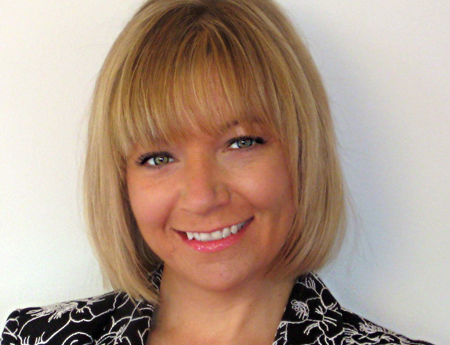
Hometown: Binghamton, N.Y. | Age: 43
Education: Ithaca College, Park School of Communications
First Media Job: Assistant media planner, Kirshenbaum, Bond & Partners, working on the Snapple account. “I was in an eight-person media department which really allowed my first experience to be pretty in-depth because there weren’t a lot of hands.” One interesting experience was putting Snapple stickers on fruit in supermarkets.
Planner vs. Buyer Mindset: “We’ve really tried to ensure a very integrated team structure. Buyers are not just negotiating spots and dots any more. Clients are demanding that we have larger integrated programs and that we’re developing content, so their mindset has changed over time more into understanding the client’s business and understanding the consumer,” Goodloe says. “That’s what the clients are demanding. They want to get more for their money and they want more engagement with the consumer.”
Favorite TV Show:Homeland
Key Client: Audi, Revlon
Cool Campaign: Audi is the official automotive sponsor of the Emmys. Last year’s campaign was called Smart Performer, which showcased an original piece of content starring Claire Danes, who was named best actress for Homeland, making the video even more relevant. The piece showed Danes having a good day and a bad day getting to the Emmys. The good day she drove to the awards in an Audi TDI. She had a comically bad day with a car service. The video ran during the Emmys, and clips were pushed out beforehand to raise awareness. “The goal was to make the Emmys more than a one-day event, because if you’re spending all that money on one day, you want to get more leverage out of it,” Goodloe says.
STEPHANIE HILL
Title: Managing director, strategy, Initiative

Hometown: Akron, Ohio | Age: 44
Education: Ohio State
Grad School: DePaul
First Media Job: Hill’s first job was at Sherman Wolf, a small agency in Chicago that handled spot buys in the Midwest for the movie studios. She worked on The Blair Witch Project. “At the time it was pretty ground-breaking because we started doing advertising about a year before the movie actually opened,” she says. They did wild postings and other pre-social media activities to get attention. “It involved a lot of leg work but it was also fun. And the fact that the movie did so incredibly well was just a huge payoff,” she says.
Planner vs. Buyer Mindset: “More and more our mindset is coming to some common ground. They’re getting much more strategic,” Hill says. “And I think on the strategic planning side, we’re getting much more big picture. If you’re looking at a Venn diagram, the circles in terms of how people are thinking about things are more and more overlapping, which is a good thing.”
Favorite TV Show:Orange Is the New Black
Key Clients: MillerCoors, Merck, Kia
Cool Campaign: MillerCoors just inked a big deal with AOL and part of that big deal is a piece on Huffington Post Live called Huff Bros. Huff Bros is video of millennial guys talking about their thoughts on dating and pop culture. “We were trying to find out if the term ‘bros’ was still relevant,” Hill says, because it was also attracting some negative buzz. Research showed it was for the most part positive, and the show went on. The online video doesn’t replace TV, Hill says. “It is a nice complement to a lot of things we’re doing. There are a lot of audiences that are watching on places like AOL that we aren’t catering to as effectively.”
ED KERNAN
Title: Group director of strategy, OMD
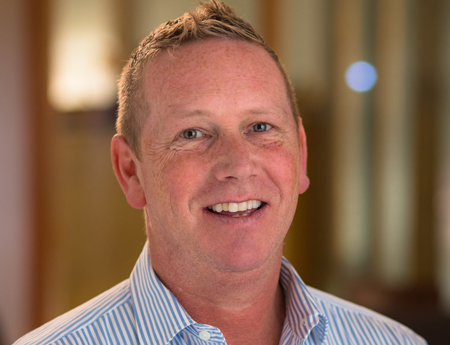
Hometown: West Orange N.J. | Age: 49
Education: Arizona State University
First Media Job: Assistant media planner at Backer Spielvogel Bates, working on the Miller Lite account. “I handled most of their print, tracking budgets and reconciliations,” Kernan recalls. “It was a fun account. It was New York. It was exactly where I wanted to start out.”
Planner vs. Buyer Mindset: “Being a planner and doing strategy you’re across all touch points, going from digital to out-of-home, print, radio, mobile. You get a much bigger picture,” he says. Buyers are experts at doing what they do, which is getting the best rates, the best original programming.”
Favorite TV Shows:American Horror Story; also The Originals and Web Therapy with Lisa Kudrow.
Key Clients: The CW, Hawaii Visitors and Convention Bureau, Oakley
Cool Campaign: Kernan has a studio background, having worked for Warner Bros., so for The CW’s Arrow, he looked at how blockbuster superhero movies are marketed. The creative executions were built around arrows and abs, focusing on star Stephen Ammel’s physical presence. The agency convinced Turner Broadcasting to run a weekend of superhero and action movies, and the CW aired 60-second ads, billboards and vignettes about Arrow to appeal to people drawn to those genres. The campaign also aired during marquee events such as MTV’s Video Music Awards and the Emmy Awards. But because of a limited budget, the agency had to be creative. It bought the VMAs locally in key markets, and red carpet coverage of the Emmys to appeal to female viewers. “The next day people asked, how could you afford the Video Music Awards?’” he says. “We try to appear big in TV.”
KARLA KNECHT
Title: Managing director, Starcom
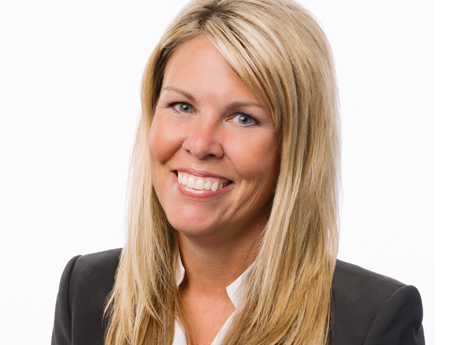
Hometown: Pittsburgh | Age: 40
Education: Northern Illinois University
First media job: Knecht started a week after graduation at Leo Burnett, which became Starcom; she has been there 19 years. She started as a media business coordinator, where she learned the technical underpinnings of the industry. “I have a lot of respect for a lot of the logistics that keep our business moving,” she says. After being promoted to planner- buyer she focused on strategy because she liked diving deep into client business.
Planner vs. Buyer Mindset: “Buyers focus on the various channels that are out there and having the relationships so they can bring ideas to the table for our clients. From my vantage point in being the strategic lead, it’s much more about and understanding what makes clients’ business work, and the nuances of their customers and their prospects, so that when we come together and identify the right places to go, we can then ensure that we’re getting the brand the exposure they need.”
Favorite TV Shows:Revenge, but she watches Dance Moms with her cheerleader daughter.
Key Clients: Allstate, plus executive oversight over Esurance, Altria, the Egg Board and Advance Auto Parts.
Cool Campaign: Knecht says she’s excited about a campaign using addressable TV for Allstate renters insurance, which historically hasn’t been backed by much spending. “The addressable space is really at the beginning of where television is going,” she says. “It’s indicative of how audience buying is not just within programmatic and digital, but also starting to be pushed into other channels as well.” Addressable TV turned out to an efficient way to give renters insurance exposure and the campaign has shown positive results.
BRIONY MCCARTHY
Title: VP, group account director, PHD

Hometown: Melbourne, Australia
Age: 38
Education: Royal Melbourne Institute of Technology
First Media Job: At Y&R Mattingly as the buyer for a large supermarket in Australia. “I spent the best part of my day standing by a fax machine in a long queue with other assistants faxing off bookings to regional newspapers,” she says. Her career took her through an agency named Reindeer and a stint in content development at The Daily Mail Group, before landing her in New York.
Planner vs. Buyer Mindset: “As a planner you spend the best part of your day turning numbers into words,” she says. “I think as a buyer you spend a lot of time turning words into numbers. It’s a self perpetuating loop, isn’t it?”
Favorite TV Show: Recently finished bingeing on the first two seasons of House of Cards.
Key Clients: Fererro, Enterprise Holdings, Kayak, Swatch, Hyatt
Cool Campaign: “Swatch’s Omega brand has deep roots in sports as the official timekeeper for events including the Olympics. Recently it became official timekeeper for golf and for the PGA,” McCarthy says. “We’ve been planning and you’ll see rolling out an integrated program across Turner and CBS and their digital partners throughout the PGA, throughout the Ryder Cup leading into the Rio Olympics under the ‘Road to Rio.’ Golf is going to be a part of the Rio Olympics so we’ve positioned Omega as bringing golf to the people. There will be a robust campaign on NBC with a weekend scoreboard, with digital clocks and countdowns to the Olympics. And it’s extending for the first time into live-streaming. Golf fans are golf fans, and they’ll watch wherever they can and a log of that is happening during work hours on desktop, so we’ve crossed over.”
CHRISTINE PINEIRO
Title: Senior VP, group account director, Carat
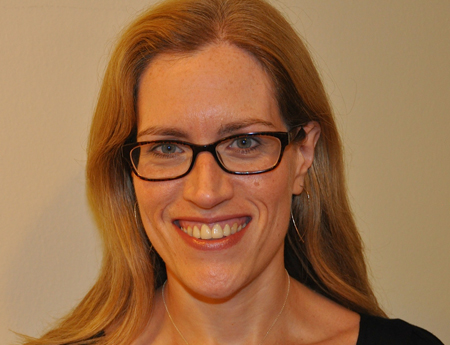
Hometown: Queens, N.Y. | Age: 38
Education: SUNY at Binghamton
First Media Job: “I was a summer intern at BBDO after my sophomore year of college,” she says. Her cousin, a sales rep at Good Housekeeping got her in. She worked there two summers and after she graduated they offered her a job in the media department. She started after Labor Day, following a trip to Europe.
Planner vs. Buyer Mindset: One of the biggest differences with planning is taking the time to develop the strategies and insights and really digging into how your consumer thinks,” Pineiro says. “With a buyer, negotiating is important, but also that ability to read a situation and understand how the client fits into the marketplace. You almost have to have a quicker gut reaction to things than in a planning role.”
Favorite TV Show: “I guess I would have to say Mad Men. It was Breaking Bad but that’s not on anymore,” she says.
Key Client: Pfizer Cool Campaign: “In the past year, Carat has helped Pfizer with a couple of significant launches, in Eliquis, a blood thinner, and Xeljanz for rheumatoid arthritis. Also, Viagra launched a home delivery effort via CVS.com. You don’t have to go to the pharmacy, so it speaks to the privacy someone might want,” she says. “It was a huge launch because we were the first to do that.” The agency led with paid search, so people would know they could go to the website to get the drug.
ALISON POHORYLO
Title: Associate planning director, Maxus
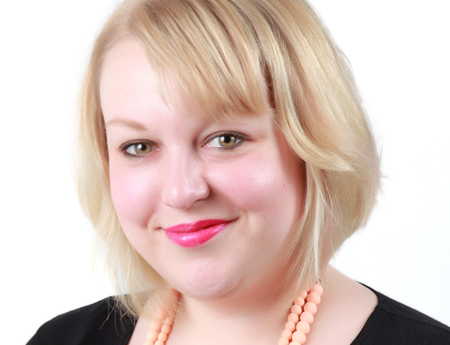
Hometown: Monroe, Conn. | Age: 31
Education: Sacred Heart University First Media Job: Assistant planner at Mediastorm, although the agency was so new no one really had titles. “The first thing that I did was a multimarket newspaper buy for the NFL Network to get people to call Time Warner to complain that they don’t have the NFL Network,” Pohroylo says. “It was a definite baptism-by-fire situation.”
Planner vs. Buyer Mindset: “We work really closely together,” she says. “On the business that I work on, because we’re planning and buying TV to drive TV tune-in, we aren’t just buying spots, we’re buying positions and places. So we’re working very closely to identify spot by spot what a buy looks like. It’s certainly not just coming out of an optimization tool.”
Favorite TV Show: “Besides everything on the USA Network,” she says, Parks and Recreation.
Key Clients: NBCUniversal’s USA Network and Sprout
Cool Campaign: On July 17, launched two new shows back-to-back: Satisfaction and Rush. “The cool thing about Satisfaction is that strategically, we’re asking America the big question that’s addressed on the show, which is: What do you do when having it all isn’t enough,” Pohorylo says. “Creatively and through media, we’re sparking that conversation.” Outdoor ads just ask questions such as, ‘Can affairs save a marriage,’ and carry the hashtag #GetSatisfaction. “We’re hoping sparking a cultural conversation leads to tune-in,” she says. TV spots have aired in shows that people are talking about. In some cases, the agency was able to buy spots nationally directly from the cable networks. In other cases, they had to buy spots in those shows locally. “It really changes campaign by campaign,” she says.
SHERI RODER
Title: Chief of the Why Group, Horizon Media
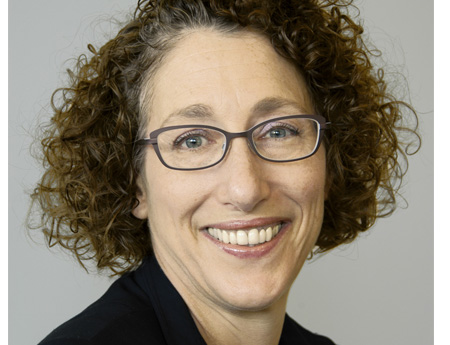
Hometown: Houston | Age: 54
Education: George Washington University
First Media Job: This is Roder’s first media agency job. She spent most of her career doing research and gathering insights at research companies starting with Market Facts in Washington, D.C., ad agencies Gotham, JWT and Saatchi Consumer Health Care, and at major marketers including Pepsi, Unilever and Guinness. At the Why Group, “we take understanding why people do what they do and then turn that into a business advantage,” she says.
Planner vs. Buyer Mindset: “The people I deal with in buying we actually share many things. Strategically, we’re all in the same camp,” Roder says. “The buy per se is demographics, although I think that will change. But they’re thinking about it from a whole-person point of view and negotiating based on that even though the currency is demos.” She adds the buyers are “phenomenal negotiators in a way that I certainly am not.”
Favorite TV Shows: Everything from Orphan Black to the Real Housewives.
Key Clients: Geico, A+E Networks, Capital One and Dish Network
Cool Campaign: For History Channel’s Hatfields and McCoys, Horizon put together a campaign based on the notion of blood feuds. Horizon’s idea was the face-off and finding oppositional media, media that forces consumers to choose a side. If you took a subway, you had to choose the Hatfield side or the McCoy side. Outdoor signs would run on pairs of buildings, one for each family. On TV, Horizon used boxing as an example of facing off. The show was integrated into HBO’s Mayweather-Cotto bout, with one corner for the Hatfields, the other for the McCoys. The campaign helped History generate record tune-in.
Jon has been business editor of Broadcasting+Cable since 2010. He focuses on revenue-generating activities, including advertising and distribution, as well as executive intrigue and merger and acquisition activity. Just about any story is fair game, if a dollar sign can make its way into the article. Before B+C, Jon covered the industry for TVWeek, Cable World, Electronic Media, Advertising Age and The New York Post. A native New Yorker, Jon is hiding in plain sight in the suburbs of Chicago.

